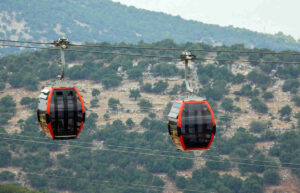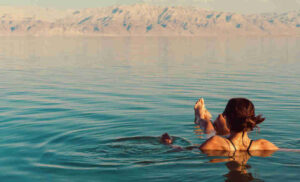The Jerash Hippodrome is one of the most interesting spaces in the spectacular archaeological site of ancient Gerasa, in northern Jordan. Although the term hippodrome is used, this is actually a modern word, so it would be more appropriate to speak of a
Where it is and when it Was Built
The Jerash circus or hippodrome was built shortly after the visit of Emperor Hadrian to the city, in the winter of 129-130 AD. It was the emperor himself who requested that an enclosure of this type be created in this area, which had previously been occupied by quarries, in the image and likeness of others in the empire, such as the famous Circus Maximus in Rome. The works, which must have been long and difficult, were already finished at the beginning of the 3rd century.
Its location in the archaeological site could not be more symbolic: right behind Hadrian’s Arch, built to commemorate the visit of said emperor. Going towards the visitor center, you can walk along its entire eastern side, which helps to understand its length:
Extraordinary Conservation
However, despite not being one of the largest circuses in the Roman Empire, experts do agree that it is one of the best preserved, at least in terms of its technical and functional elements. In other words, it is very useful for learning more about horse races in ancient Rome, which were a mass spectacle, comparable to today’s Formula 1.
In particular, there are three elements that attract the interest of every visitor:
- Carceres: this is the name given to the starting positions of the bigas and quadrigas, something like the pits. They are the arches located in the southern part of the enclosure and at the time had wooden doors (which opened when the start was given) and altars, so that the participants could entrust themselves to the gods.
- Cavea: that is, the tribune or grandstand. Due to the dimensions and the preserved rows (more than 15 rows), it is estimated that it could accommodate about 15,000 spectators.
- Arena and spina: the ground on which the horse-drawn chariots ran was covered with sand. And in the center, an elongated structure (
spina ) was mounted around which the runners had to make seven laps. Nowadays, tents or other facilities are often set up, or sometimes a wooden structure as a reconstruction.
Decline and End of the Hippodrome
Despite having hosted numerous races, in the 4th century the Jerash hippodrome no longer fulfilled this function. Probably, the reason was problems in the foundations, which meant that little by little it was used for other things. For example, pottery workshops were installed under the arches of the cavea. And over time, its stone ashlars were dismantled to build or repair other structures, such as the wall.
And serious earthquakes in the 7th and 8th centuries caused its definitive abandonment… until today: races are no longer organized as in the past, but there are demonstrations by the Roman Army and Chariot Experience, showing visitors what those mass spectacles that unleashed so many passions were like.



